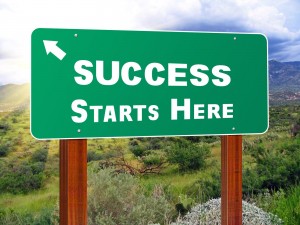“One reason so few of us achieve what we truly want is that we never direct our focus; we never concentrate our power. Most people dabble their way through life, never deciding to master anything in particular.” —Tony Robbins
By Elizabeth Stincelli, DM
What’s Important?
With so many priorities fighting for our attention, how do we know where to direct our leadership focus? While many situations require temporary focus, there are some areas that warrant consistent focus. You must focus on your people and your vision for your organization. You must also focus on yourself and your personal mission. As a leader, how do you know if you’re focusing on the right things? How would you answer the following questions?
Are you leading with you head and your heart?
Are you contributing to the personal and professional growth of your employees?
Are you including others in your leadership?
Are you encouraging your employees to challenge the status quo?
What do you want your legacy to be?
How will you impact the world?
Do you know what your goals are?
Can you see the route for achieving them?
Are you developing and maintaining a strong character?
Once you can see where you need to focus you will be less distracted by day-to-day busy work. You will experience less stress and frustration. You and your employees will be able to maintain a better work/life balance. Focus keeps you from drifting off course. It allows you to keep a finger on the pulse of your organization and your life. Make the commitment to focus on what’s important.
Your people
Sabrina Bryan explained, “You can do anything as long as you have the passion, the drive, the focus, and the support.” Sabrina Bryan’s quote is a two-way street. As a leader, you need passion, drive, focus, and the support of your people to succeed. Your people also need you to inspire passion and drive, they need you to guide their focus, and they need your support. Only when your people receive what they need from you will they give you what you need in return. Focusing on your people is an investment in mutual success.
Get out on the floor and really connect with your people. Engage them in participating in leading the organization and developing solutions to real problems. Encourage the creativity and collaboration that builds strong teams that can work together to achieve mutually beneficial goals. Celebrate accomplishments. Align the individual goals of employees with organizational goals. Focus on making sure every employee knows how their decisions and actions contribute to achieving organizational goals and give them the skills and tools necessary to be successful.
Yourself
Venus Williams said, “I don’t focus on what I’m up against. I focus on my goals and I try to ignore the rest.” It is easy to get distracted from what’s important by the chaos that surrounds us. Concentrate on goals that guide you toward making a positive impact on the world. Develop a plan; when you have a plan to focus on you can respond rather than react to situations as they arise. Focus on pushing yourself to think and act differently and to seek opportunities where others see only obstacles. Always consider the “what ifs?” to ensure that your focus doesn’t become an excuse to put on blinders.
Focusing on yourself is not about what you do, it’s about the type of person you want to be. To be that person you must be authentic and consistent in both your professional and personal life. Remember to always keep a picture in the back of your mind of the impact you want to make. Knowing where to keep your focus will help prevent you from straying off course.
Leadership Focus
Denis Waitley suggested, “Don’t dwell on what went wrong. Instead, focus on what to do next. Spend your energies on moving forward toward finding the answer.” As a leader, develop a plan; know which direction you are going and what your objectives are. Then, focus on supporting and developing your employees and developing goals that will have a lasting impact. Focus will help you remember why you’re doing what you’re doing and will keep you heading in the right direction. Minimize distractions and maximize your leadership focus.
© 2014 Elizabeth Stincelli
Elizabeth Stincelli is passionate about recognizing and inspiring the leader in each of us. She is the CEO of Stincelli Advisors where she focuses on helping organizations engage employees and improve organizational culture. Elizabeth holds a Doctor of Management degree with an emphasis on organizational leadership.
Learn more about Elizabeth by visiting her website, stincelliadvisors.com and connect with her on Twitter @infinitestin, Google+, and LinkedIn. You can contact her by email at stincelliadvisors@gmail.com.










